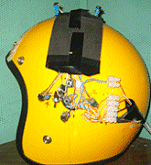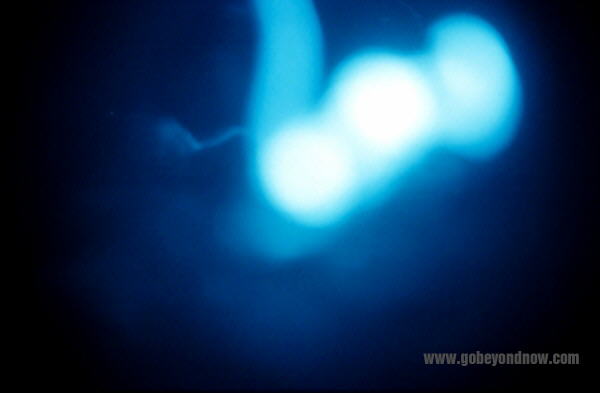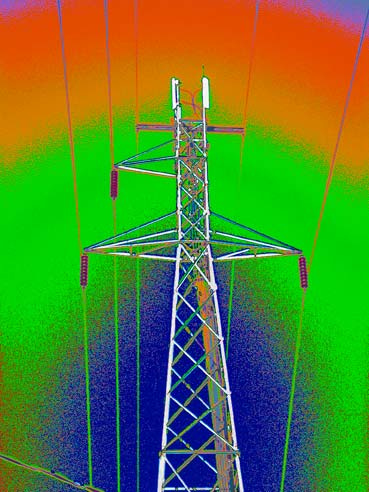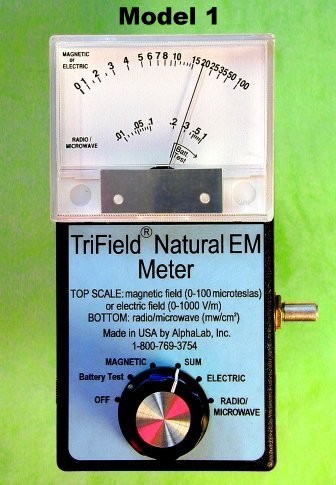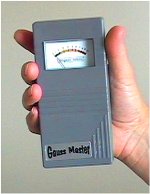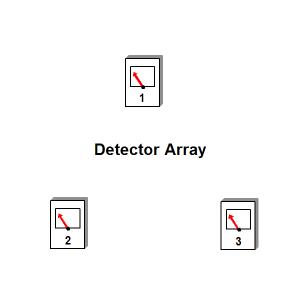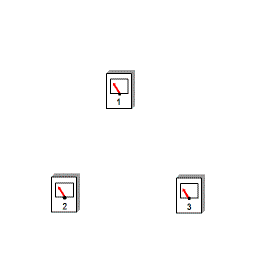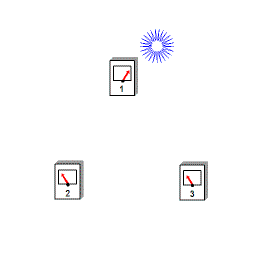Theory 1:
Paranormal energy forms interact with electrical circuits, electronic devices, and living organisms in ways that suggest a strong electromagnetic field is sometimes associated with paranormal activity.
We'll call this "The Electromagnetic Model" of paranormal energy. We've all heard reports of ghostly activity where lamps flicker, TV sets turn themselves on and off, mysterious voices and sounds come through radio and stereo speakers, etc. Since light is also a form of electromagnetic radiation, paranormal researchers could argue that all visual sightings, including the appearance of "orbs" and other mystery objects in photographs, should also be classified as electromagnetic. And let's not forget about EVP which, by definition, is electronic in nature.
Click any image below to learn more
The Electric and Magnetic
Components of an EM Wave
Move at 90° Angles to Each Other
Theory 2:
EMF radiation can influence the human brain's bio-electrical processes in ways that stimulate subjective experiences which are mistakenly perceived as external events by the person exposed to the EMF radiation.
We will call this the "Persinger Model" after Dr. Michael Persinger, the Canadian neuroscientist who has attained pop status in certain circles for his famous lab experiments in which the brains of test subjects were exposed to concentrated pulses from electromagnets mounted on a motorcycle helmet. The Persinger Model suggests that unusual but explainable factors such as electrical effects from natural events like earthquakes, volcanic eruptions, solar flares, etc., or even the man-made sources of electromagnetic radiation so common in our modern environment are, in reality, the true stimuli responsible for reports of paranormal activity.
Dr. Persinger's
Paranormal Helmet
Theory 3:
Free-roaming discrete electromagnetic energy forms exist which are capable of interacting with other electromagnetic systems, they are capable of producing certain physical effects, and they are also capable of influencing human cognitive processes.
This is the proposed "Go Beyond
Now Model". Based on the wide variety of
historical background reports concerning paranormal activity, our model assumes
that discrete paranormal energy forms do exist, they can sometimes be visually observed
or photographed, and, from time to time, their presence can be deduced by
the occurrence of otherwise unexplainable physical events.
Thus, unlike the Persinger Model, our proposal accepts the reality of an
ephemeral and
as-yet-unknown-to-science energy form that can interact with the natural world
and produce real-world effects. Also, with support from Persinger's
own experimental observations, we further propose that:
These paranormal energy forms are capable of influencing human brainwave activity in such ways that they can literally "impose" thoughts and "artificial perceptions" directly into our minds. This ability to, in effect, bypass the normal channels of sensory input (eyes, ears, etc.) can cause people to perceive or to simply "remember" things that are not real in the normal objective sense. However, such perceptions and false memories do have an external causal basis, they are not merely hallucinatory-type experiences.

